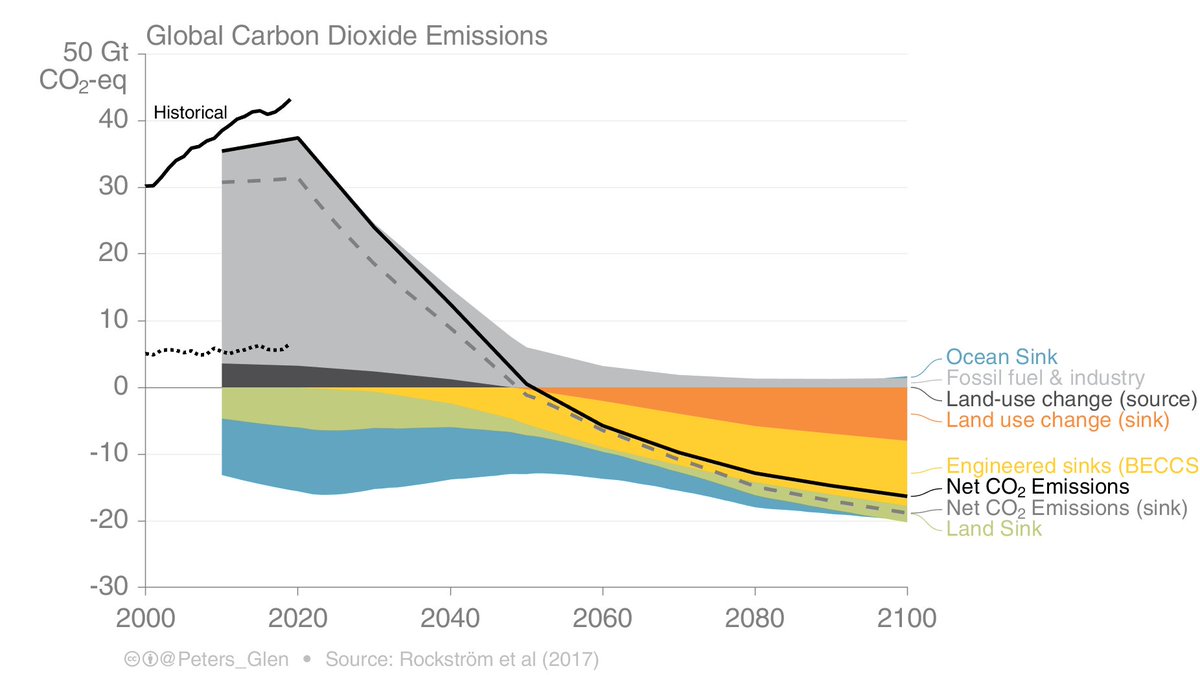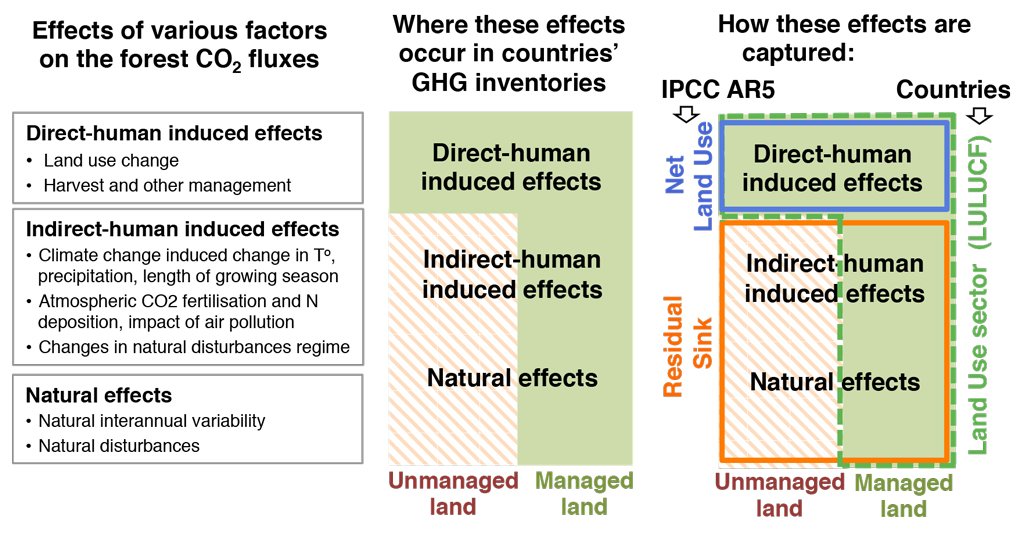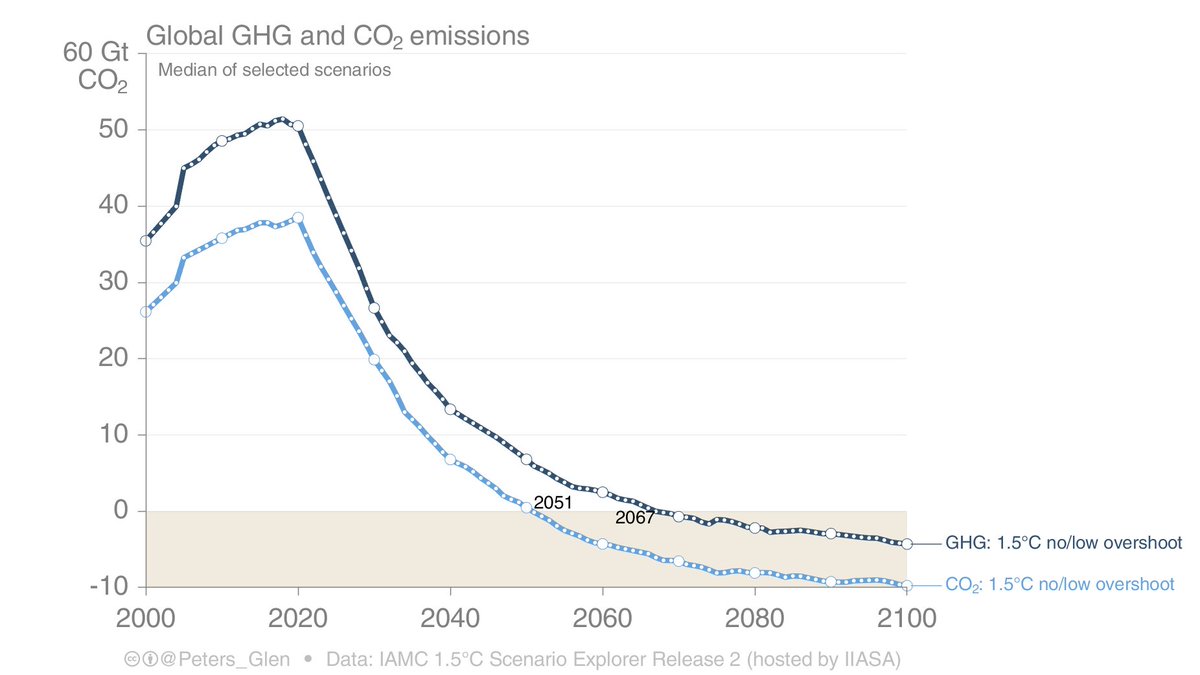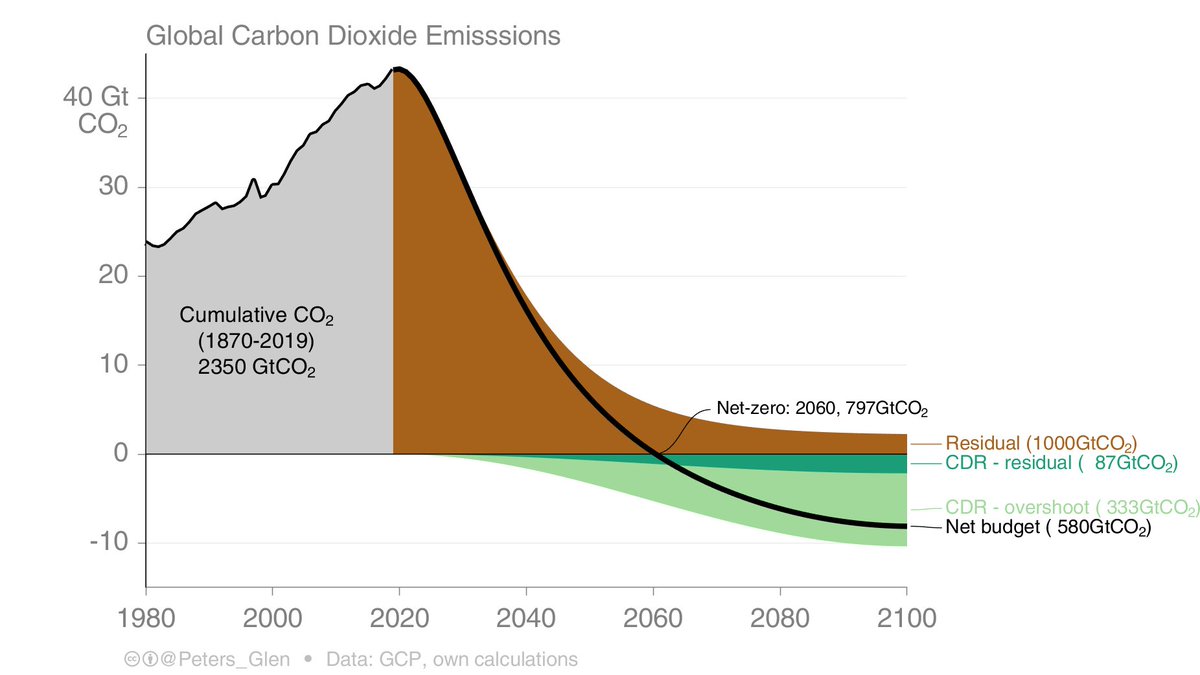
Historically, the land & ocean sink have removed about one-half of the anthropogenic CO₂ emissions.
If we mitigate successfully in the future, the sinks will take up less CO₂ since emissions are lower, but they will be replaced by 'engineered sinks'.
1/n
If we mitigate successfully in the future, the sinks will take up less CO₂ since emissions are lower, but they will be replaced by 'engineered sinks'.
1/n

This is a more detailed figure showing the anthropogenic CO₂ emission sources (top), & the land and ocean sinks (with the balance remaining in the atmosphere). Bread & butter carbon cycle...
2/
globalcarbonproject.org/carbonbudget/i…
2/
globalcarbonproject.org/carbonbudget/i…

As we mitigate, the land & ocean sinks take up less, but engineered sinks (eg BECCS) & afforestation increase.
If the land sink is included as an emissions source, then emissions still need to go to zero about the same time (dashed line).
Fig based on science.sciencemag.org/content/355/63…
3/
If the land sink is included as an emissions source, then emissions still need to go to zero about the same time (dashed line).
Fig based on science.sciencemag.org/content/355/63…
3/

Why would one add land sinks to emissions? As an experiment!
UNFCCC inventories do partially include some 'natural' sinks in as anthropogenic emissions (green in right panel). The figures above take anthropogenic as the blue box.
4/
carbonbrief.org/guest-post-cre…
UNFCCC inventories do partially include some 'natural' sinks in as anthropogenic emissions (green in right panel). The figures above take anthropogenic as the blue box.
4/
carbonbrief.org/guest-post-cre…

These differences are not minor...
Net land-use emissions based on scientific studies (blue) are about 4GtCO₂ higher than those based on UNFCCC inventory definitions (green)...
5/
More details:
rdcu.be/bHT2p
Net land-use emissions based on scientific studies (blue) are about 4GtCO₂ higher than those based on UNFCCC inventory definitions (green)...
5/
More details:
rdcu.be/bHT2p

Some countries / regions are starting to include the UNFCCC land-sink in their emission targets (NDCs), such as the EU27.
This makes net-zero much easier. It may be ok, but it is on a slippery slope of definitions...
Sweden, eg, will almost be at net-zero if including sinks
6/
This makes net-zero much easier. It may be ok, but it is on a slippery slope of definitions...
Sweden, eg, will almost be at net-zero if including sinks
6/

What would happen if we said 'bugger it' & let countries allocate their entire land-sink to anthropogenic emissions?
Some would get a short-term boost, but if mitigation happens, the sink vanishes. It may even make mitigation harder as it is necessary to protect the sink.
7/
Some would get a short-term boost, but if mitigation happens, the sink vanishes. It may even make mitigation harder as it is necessary to protect the sink.
7/

Back to the original figure, some will note the obvious inconsistencies in historical emissions & land-sink.
The future sink is based on MAGICC, & would require digging into weeds to understand if there is an inconsistency with history. I will ignore for now!
8/
The future sink is based on MAGICC, & would require digging into weeds to understand if there is an inconsistency with history. I will ignore for now!
8/

How to incorporate the 'land sink' into climate targets is going to be a big discussion in the years ahead.
Countries will be finding whatever way to become net-zero. But, since the sink declines with mitigation, it may not matter?
This thread is just a background...
/end
Countries will be finding whatever way to become net-zero. But, since the sink declines with mitigation, it may not matter?
This thread is just a background...
/end
• • •
Missing some Tweet in this thread? You can try to
force a refresh


















